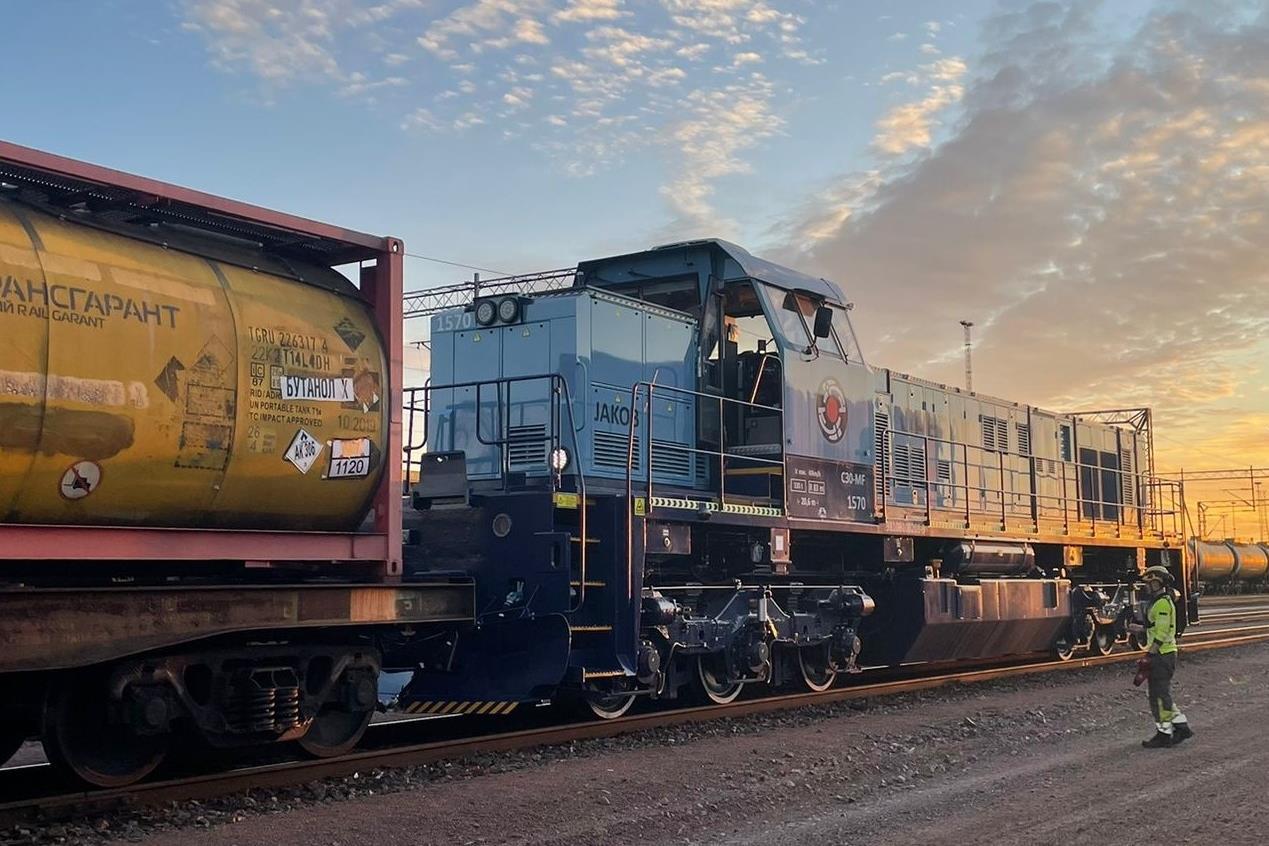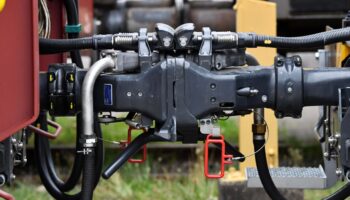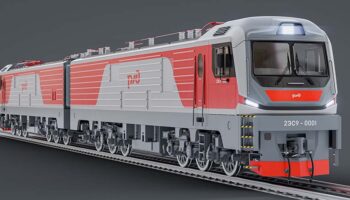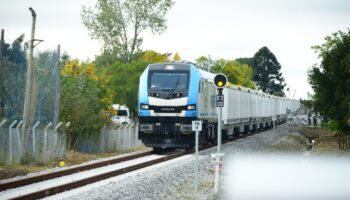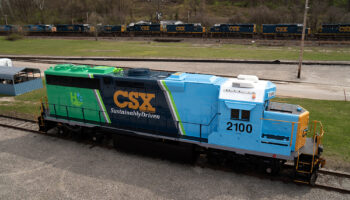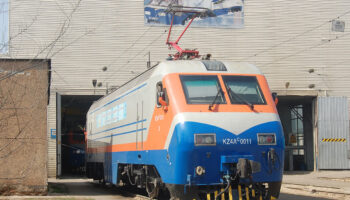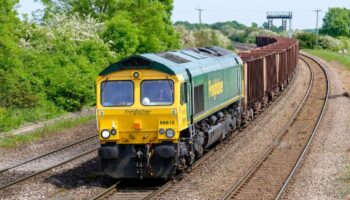Finland: Following the successful completion of a six-month trial, the state-owned Operail freight operator from Estonia received approval from the Traficom transport safety agency to put the C30-MF diesel locomotive into service on public tracks. The vehicle was co-produced with CZ Loko.
Operail began providing freight transportation services in Finland in autumn 2020 by establishing a subsidiary, Operail Finland. It operates a fleet of 9 PowerHaul mainline diesel locomotives by Wabtec in the country. Raul Toomsalu, Chairman of the Operail Board, said that the launch of the C30-MF locomotive in the port of Kotka will greatly simplify shunting operations, as they were previously performed by PowerHaul locomotives.
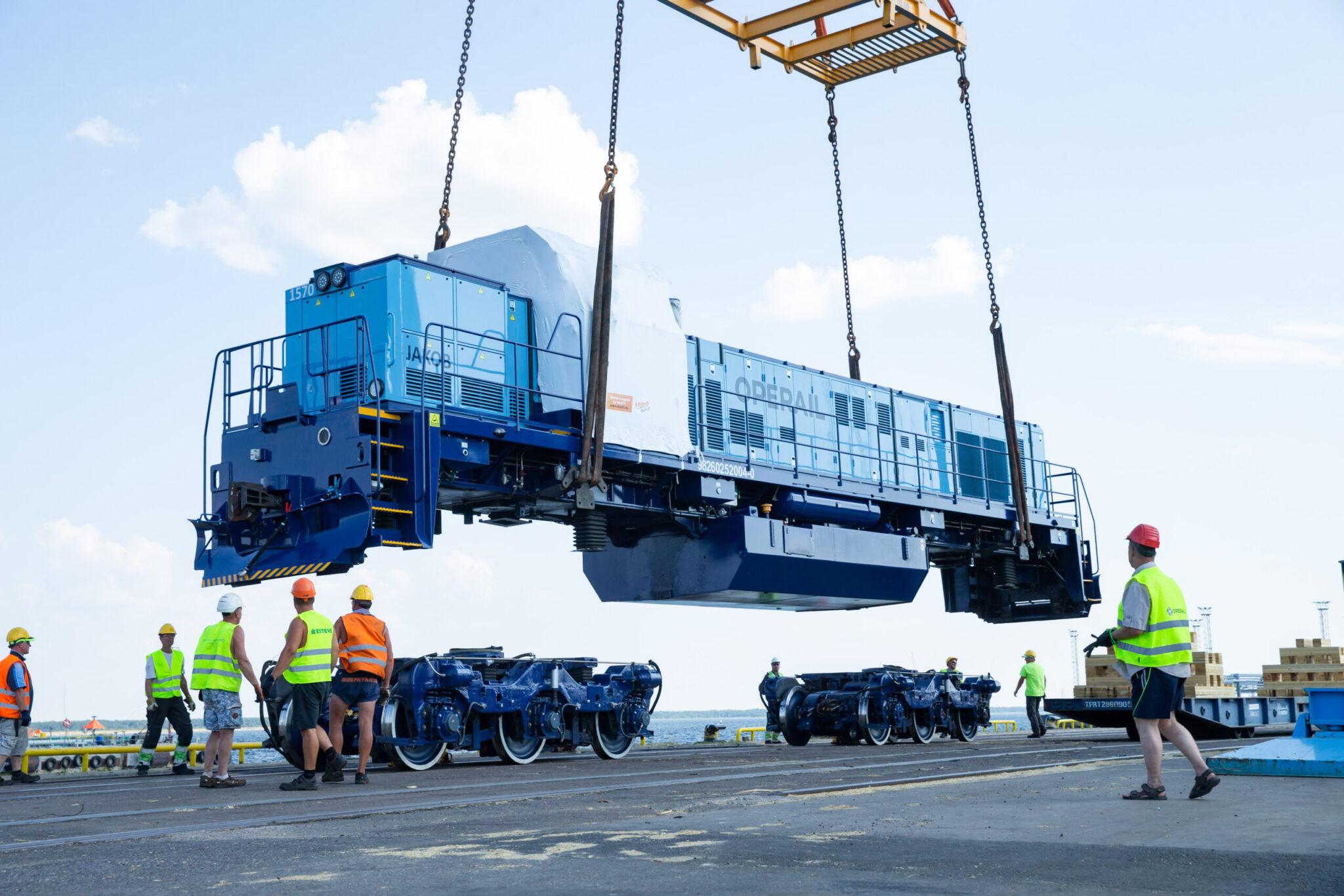 Loading of the C30-MF diesel locomotive on the ship. Source: Raul Mehe, Operail
Loading of the C30-MF diesel locomotive on the ship. Source: Raul Mehe, Operail
The new C30-MF is a modification of the C30-M diesel locomotive, which Operail produces together with CZ Loko at the depot in the Estonian city of Tapa. The first C30-M was introduced in the fall of 2018, since then 12 locomotives of this series have been produced. When assembling the C30-M, a frame and bogies from the C30-7Ai mainline diesel locomotive, produced in 1976-1986 by GE Transportation (part of Wabtec since 2018), and modules of the main equipment manufactured by CZ Loko are used. The traction system consists of a Siemens 1FC2 631-6 traction generator and a 1,550 kW Caterpillar 3512CHD diesel engine that meets Stage IIIA emission standards. Traction force when starting off is 436 kN, and more than 289 kN in long-term mode. The C30-MF modification for Finland included changes to the refueling and radio systems, as well as re-profiling of the wheelsets in order to adapt the locomotive for operation on 1,524 mm gauge instead of 1,520 mm.
Operail mastered the production of locomotives in 2017 as a C30-M diesel locomotive started to be manufactured at the Tapa depot. It became the first locomotive assembled in the country in the last 86 years. In 2019, Operail decided to restructure the Tapa depot, as a result of which the site stopped providing railcar repair services and concentrated entirely on the locomotives production.
In addition to locomotives assembling, the depot also specializes in the modernization of locomotives in the operator’s fleet. So, in 2021, a project was implemented to convert the C36 mainline diesel locomotive (built by GE in 1985) to the hybrid traction which includes usage both diesel and liquefied natural gas (LNG). The fuel tank of the vehicle with a volume of almost 18,000 litres was divided into three parts: tanks for diesel remained at the edges, and a tank for LNG were placed in the center. The locomotive was also equipped with a fuel consumption control system. This project is worth around €250,000 and expected to reduce fuel costs by 30% and CO2 emissions by 20%. According to Raul Toomsalu, a decision to convert remaining C36 locomotives of Operail to gas-diesel traction will be made depending on the results of the trials.
C36 diesel locomotive, upgraded for gas-diesel traction, on trials, video from April 2022. Source: Operail
However, also in 2021, Operail signed a letter of intent with the Stargate Rail hydrogen fuel cells producer to implement the project of the C36 locomotive converting to hydrogen-battery traction. The prototype should be ready by the end of 2022. The diesel engine is planned to be replaced by a traction system consisting of hydrogen fuel cells with a polymer electrolyte membrane and Li-Ion batteries. It is planned to undergo the same modernization for 40 more locomotives after the first hydrogen vehicle certification. This is expected to reduce CO2 emissions by 370 t per year for each locomotive. CZ Loko also announced the development of a hydrogen shunter last year.



